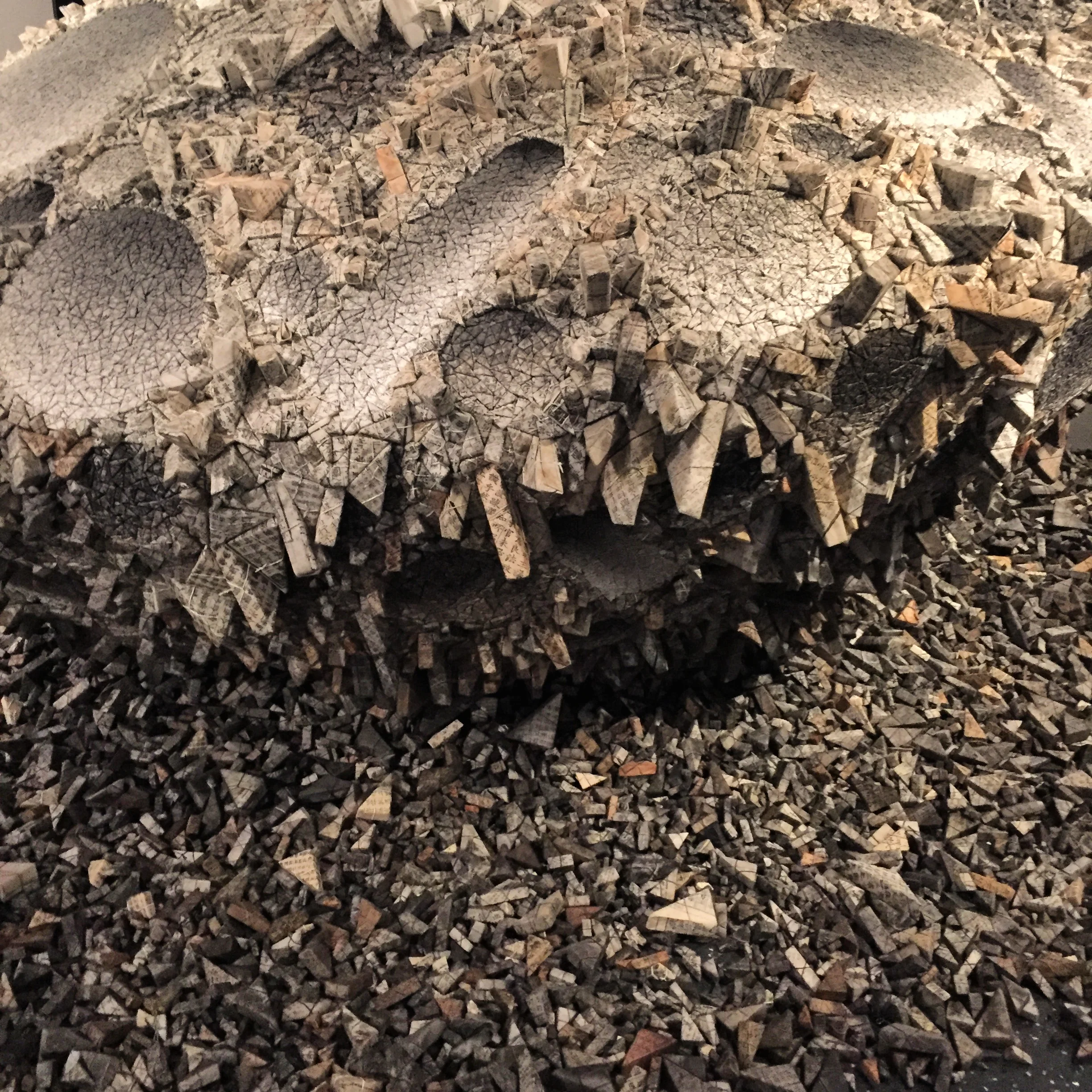Fantasma by AnotherFarm: transgenic silk (injected with coral DNA to glow red) dresses
As per the website:
With projects ranging from experimental prototypes to consumer products, immersive installations, and architectural constructions, Nature—Cooper Hewitt Design Triennial, co-organized with Cube design museum, presents the work of sixty-two international design teams. Collaborations involve scientists, engineers, advocates for social and environmental justice, artists, and philosophers. They are engaging with nature in innovative and ground-breaking ways, driven by a profound awareness of climate change and ecological crises as much as advances in science and technology.
Tree of 40 Fruit by Sam Van Aken: using centuries old grafting techniques, 40 varietals are incorporated into one living tree
Choreography of Life by Charles Reilly: depicts ATP synthase harvesting the metabolic energy stored in ATP bonds
Bioreceptive Concrete Panels by Marcos Cruz, Richard Beckett, Javier Ruiz, Nina Jotanovic, Anete Salman, Manja van de Worp: a natural method of fighting air pollution
Cillia coat by Jifei Ou, Hiroshi Ishii, Fabian Neumann, Sen Dai: 3D printed hairlike structures on the coat can be programmed to provide warmth, act as sensors or aid movement
Bamboo Theatre by Xu Tiantian: with a little help from an architect, local Chinese bamboo basketmaking knowhow helps villagers build stable architectural structures for community gatherings
A World of Sand by AtelierNL: a sentimental statement about teamwork and diversity?
AIR (Avoid-Intercept-Redesign) sneaker prototype for Adidas by Parley for the Oceans: running shoes made entirely of marine plastic waste
3D-Painted Hyperelastic Bone by Adam E. Jakus and Ramille Shah: hydroxyapatite (a form of calcium found in bones) makes these implants porous, flexible, strong and recognized by the body like real bones, aiding faster bone regeneration and tissue integration with low or no immune response
The Substitute by Alexandra Daisy Ginsberg: CGI animation and DeepMind behavioral software is used to recreate the extinct male northern white rhino
Project Coelicolor by Natsai Audrey Chieza: Textiles dyed with pigment producing bacteria eiiminate water waste and pollution from the process. Colors are controlled by pH, oxygen exposure and time.
Bleached (II) by Erez Navi Pana: this salt-crystallized loofah and wood stool symbolizes changing human perception of natural commodities.
Cisterns by Hiroshi Sambuichi: displayed in old city cisterns around the world, this installation transposes the experience of visiting the Itsukushima Shrine (in Miyajima, Japan) onto local environments
Biocement Masonry by Ginger Krieg Dosier: made of mixed sand, nutrients and microorganisms, these bricks are as strong as standard bricks and are grown and dried in molds, eliminating high carbon emissions typical of the standard firing process.
Warka Water Tower by Arturo Vittori: collects potable water from dew, fog and rain
Aguahoja II by Neri Oxman: made of biocomposite materials made from shrimp shells and fallen leaves, these “skin and shell” structures can be 3D printed and programmed with different mechanical, optical and olfactory properties, including timed decomposition.
Curiosity Cloud by Katharina Mischer and Thomas Traxler: hand fabricated replicas of different insects that would not be found together in nature are united, and triggered to flutter by human movement
Made by Rain by Aliki van der Kruijs: textiles dyed by rain interacting with their ink are “fingerprints'“ of location, date, time interval, and millimeters of rainfall
After Ancient Sunlight by Charlotte McCurdy: this petroleum free algae-based plastic raincoat is manufactured in a manner that metabolizes atmospheric carbon rather than emitting it
Personal Food Computer by Daniel Poitrast and the OpenAg team at MIT: a tabletop sized, robot monitored chamber creates environmental conditions yielding desired phenotypic expressions from plants
Visualizing the Cosmic Web by Kim Albrecht: how are galaxies in our universe related? mapping their connections with different models helps us better understand the history of our universe, or potential multiverse
Monarch Sanctuary by Mitchell Joachim and Vivian Kuan: a vertical meadow with glass facade and carefully temperature and humidity controlled interior helps replete dwindling Monarch butterfly populations
I hope against hope that some of these carbon negative and pollution upcycling technologies become standard before we ruin Earth’s habitability.





















































































































































































